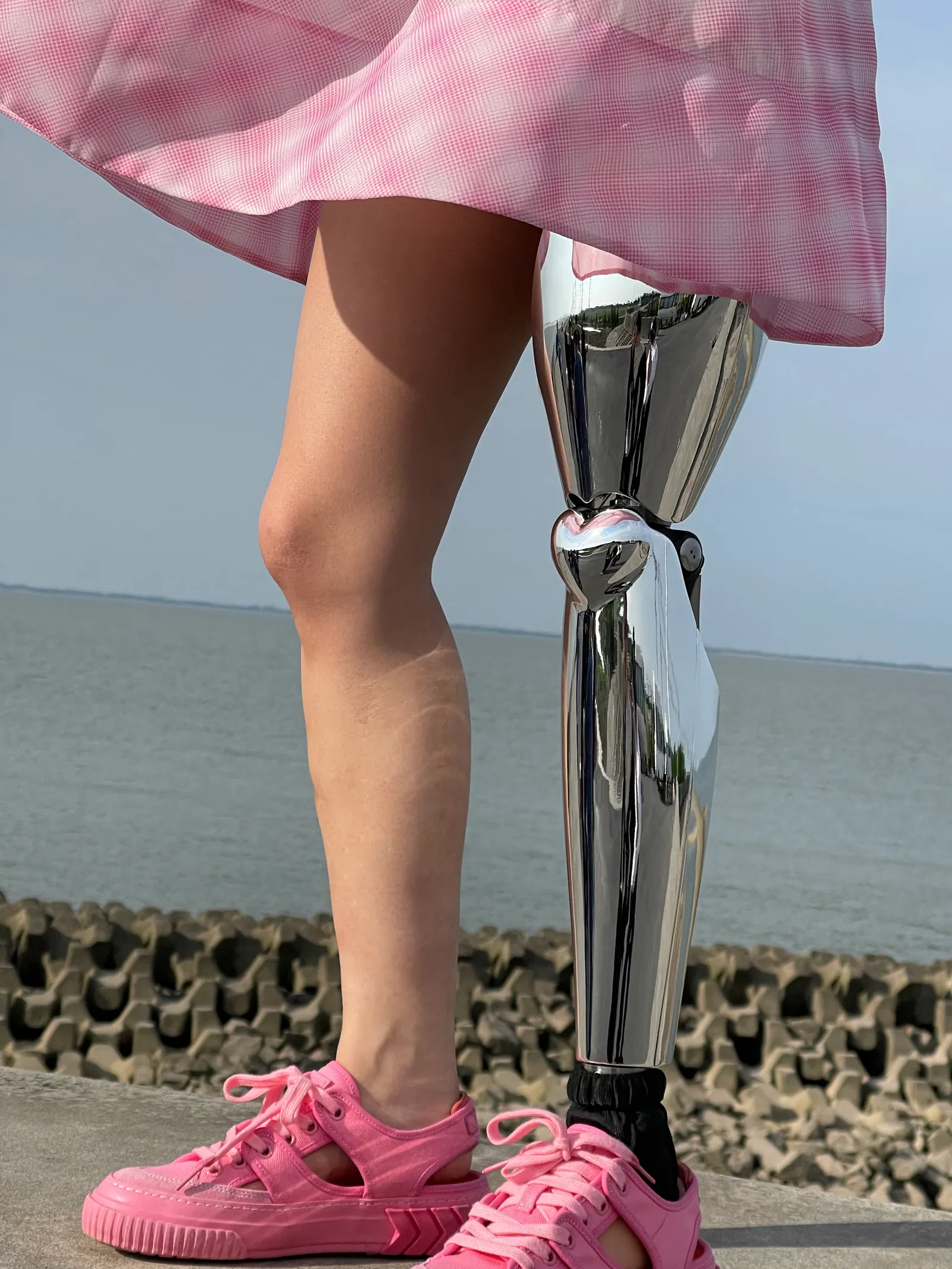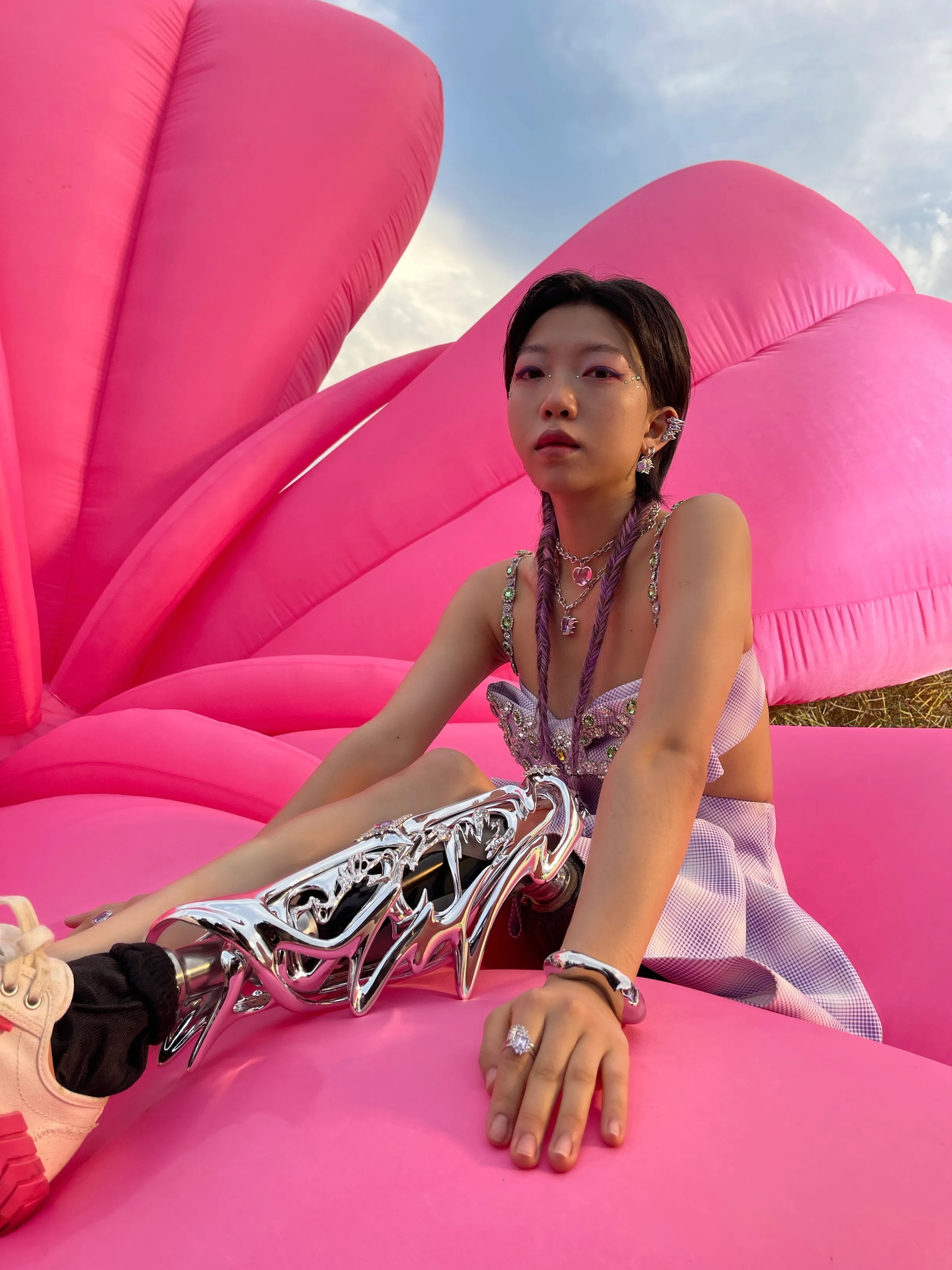Embodied Style: Redesigning Prosthetics as Fashion Statements
- lucyroche4
- Sep 6, 2022
- 4 min read
‘The emergence of the figure of the glamorous amputee suggests that fashion is currently, at long last, allowing disability to enter the visual culture, but on its own terms: by turning amputee bodies into epitomes of refined consumption.’ - Laini Burton and Jana Melkumova-Reynolds (2019)
For decades people with disabilities have largely been excluded from the fashion world and visual culture in general, with many becoming fetishized or exploited. Exclusion from the fashion industry has led to many individuals with disabilities to compromise their fashion tastes for clothing that is suited to their prosthetics, rather than having the clothing fit their bodies and style preferences. Furthermore, manufacturers of prosthetics predominantly do not consider the individuals’ personal stylistic taste within their prosthetics, but choose functionality over individualism. However, there have been some key manufacturers and individuals who have challenged this outdated approach to prosthetics and move more towards fashionable prosthetics suited to the individuals’ personal taste, advocating for a change within the fashion world and visual culture as a whole, which will be explored throughout this article.
Beginning with the cover photograph to this article, Latvian-born British singer and model Viktoria Modesta (@viktoriamodesta) is an advocate for people with disabilities, encouraging a different approach towards disabilities and perception of prosthetics, particularly within the fashion industry. Scholars Laini Burton and Jana Melkumova-Reynolds have written an extensive journal article on the work of Modesta, particularly her musical talent during the 2014 Paralympics promotional campaign with Channel 4 in the UK titled Born Risky. As part of Modesta’s work with Channel 4, the music video Prototype was debuted, which featured Modesta in a variety of fashionable prosthetics, with the ‘giant [black] stiletto heel’ prosthetic being the main fashion statement of the video.
Prototype by Viktoria Modesta (2014)
During an interview surrounding her prosthetics featured in the music video, Modesta reflected on her stylistic choice stating;
‘Even though … the most obvious way … somebody will look at [my prosthesis] … would be “it’s a black spike leg, that must be really fetish or really Goth”, [it is not the case]. I was more inspired by … Matthew Barney films, [choreographer] Marie Chouinard, cult films like Blade Runner, [Alexander] McQueen and [Thierry] Mugler, and all those things. So, for me, the references in my head are not Camden Town … they come from high fashion.’
Interestingly from this interview extract there are multiple intricacies to Modesta’s stylistic references that go beyond the misconception of her ‘giant stiletto heel’ being a connection to fetishism and the body modification community. As discussed by Burton and Melkumova-Reynolds, it is a generalised misconception that the ‘reclaiming [of] the body through its extreme modifications, especially after traumatic experiences’ is strongly linked to the body modification community and is often ‘connected’ to individuals who have prosthetics. However, as Modesta clarifies within her interview, this was not her point of reference for her ‘giant stiletto heel’, but rather more nuanced influences seen within high-fashion, such as the works of Alexander McQueen and Thierry Mugler. A prominent reference to Modesta’s own stylistic choice was seen with Paralympic athlete Aimee Mullins, who wore prosthetic legs carved out of ash wood by Bob Watts and Paul Ferguson as a collaborative piece between herself and McQueen for his Spring/Summer (S/S) 1999 collection.
Photographs from;
Modesta demonstrates through her high-fashion influences that her prosthetic was a form of ‘power-dressing’ and ‘her desire to legitimate designer prosthetics as a ‘high fashion’ category’, moving towards creating a space for individuals with disabilities within the mainstream visual culture. The work of Modesta and Mullins represented a shift towards increased visibility of individuals with disabilities and encouraged an empowering element to the relationship between fashion and prosthetics.
Moving onto another example that features the redesigning of prosthetics, the partnership between Chinese model Xiao Yang (@xiaoyangbure) and Chinese jewellery brand YVMIN (@yvmin_official) demonstrated a design shift for prosthetics towards the consumer’s personal stylistic choice. Highlighting a slightly different approach to that of Modesta’s prosthetic, YVMIN and Yang decided to create detachable designs that could be fitted onto the existing modelled leg. As Xiaoyu Zhang and Min Li (the two designers behind YVMIN) described during the manufacturing process;
‘[...] to create them [the decorative shells] the designers had to take 3D scans of Yang’s prosthetic limb and legs in order to make a structure that could easily fit over them. The shells are made of nylon and resin [...] this lightweight material can ensure that the shell will not burden Xiao.’
After the manufacturing process was completed, Zhang and Li were able to add decorative elements such as a heart-shaped knee-cap and abstract shapes that are reminiscent of a growing plant.
Photographs from:
The motivation behind this partnership was to encourage the fashion industry to become more inclusive and incorporate the personal stylistic taste of the individual with disabilities. To quote Zhang;
‘We [hope this project] lets more people pay attention to the decorations that can be used for prosthetics. Prosthetic wearers can have their favourite accessories without replacing expensive prosthetics. We hope that our design and creation can give people more choices, no matter which group they belong to- this is our motivation for the future.’
Overall, it is evident that the fashion industry has a long way to go to become more inclusive. However, with designers such as Xiaoyu Zhang and Min Li and influential individuals with disabilities such as Viktoria Modesta and Xiao Yang, new generations of designers and those with disabilities can become inspired by their work and feel more empowered to embrace their disabilities. By alamgating the individuals’ stylistic choice within their prosthetics, it allows for more space for creativity and provides a more personal touch for the individuals’ fashion statement. This process is therefore turning prosthetics away from being solely about functionality, but embracing individualism and originality with creativity.
Bibliography;
AnOther Magazine. Accessed: 6 September 2022. URL: https://www.anothermag.com/
Channel 4 Youtube Channel. Accessed: 6 September 2022. URL: https://youtu.be/jA8inmHhx8c
Christian Allaire. "This Chinese Jewelry Brand Turned Prosthetics into Wearable Art" (2021). Accessed: 6 September 2022. URL: https://www.vogue.com/article/yvmin-chinese-jewelry-brand-prosthetics
Jana Melkumora-Reynolds and Laini Burton. ""My Leg is a Giant Stiletto Heel": Fashioning the Prothetised Body." (2019) Fashion Theory. 10.10. pp. 195-218. URL: https://doi.org/10.1080/1362704X.2019.1567061
Jazz Monroe. "'Bionic Pop Star' Viktoria Modesta Invades X Factor Final." (2014) Accessed: 6 September 2022. URL: https://www.dazeddigital.com/music/article/22934/1/bionic-pop-star-viktoria-modesta-invades-x-factor-final
V&A Museum. "Prosthetic Legs". Accessed: 6 September 2022. URL: https://www.vam.ac.uk/museumofsavagebeauty/mcq/prosthetic-legs/
Cover image from: https://www.dazeddigital.com/














Comments